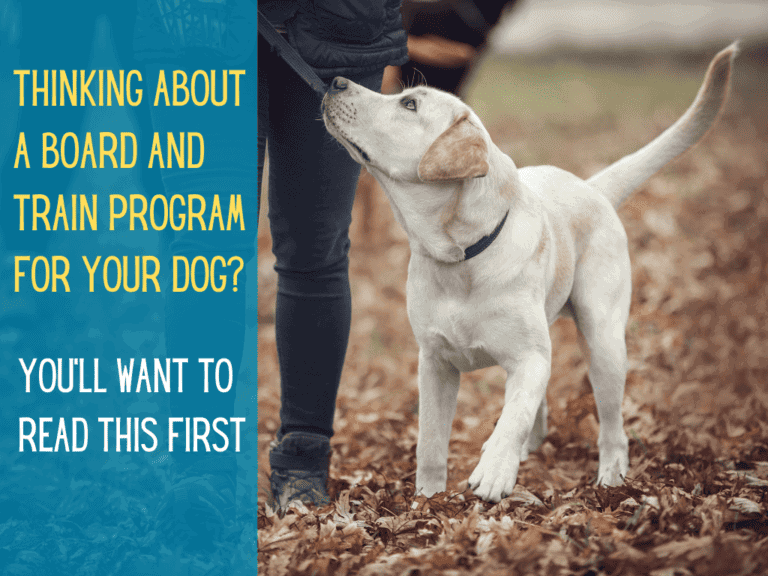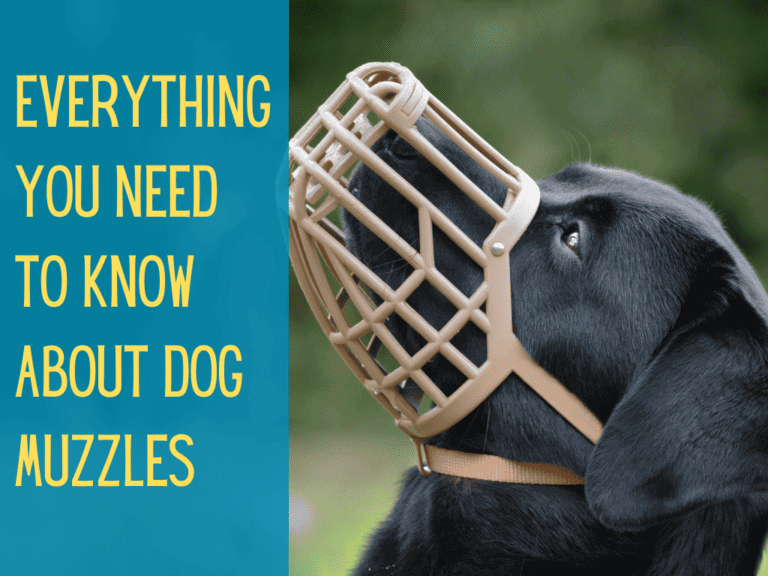How to Pet a Dog: Tips for Safe & Enjoyable Interactions
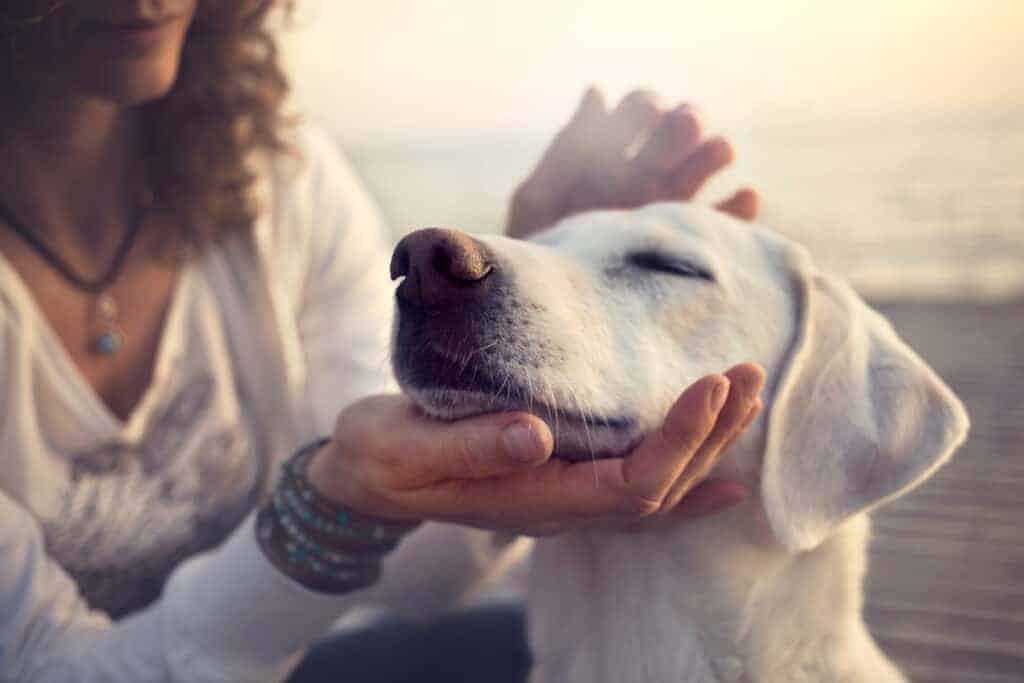
Meraki Dogs may earn a small commission when you buy through links on this site at no cost to you. See our disclaimer here.
Have you ever hesitated to pet a dog, unsure whether it’s an invitation or a warning?
I think it’s safe to say that most of us have been there at one point or another.
While extending love to these canine companions seems like a no-brainer, there’s an art to understanding the subtleties of their responses. So, I’m here to go over the basics of maintaining respectful interactions with dogs!
Ready to learn? Let’s go!
The Importance of Proper Dog Interactions
At its core, petting a dog isn’t a mere touch; it’s a language. It’s a gesture of affection, trust, and understanding.
Respectfully approaching a dog means recognizing the dog’s boundaries, reading their body language, and ensuring mutual respect. When you approach and pet a dog the right way, it opens you up to a moment of bonding and reflects respect for their space and feelings.
How to Pet a Dog – The Right Way!
Follow these guidelines to ensure safe and respectful interactions with familiar and unfamiliar dogs.
Ask For Permission First
It’s not just about the dog’s comfort; it’s also about respect for the owner. You’re acknowledging the dog’s boundaries and the owner’s feelings by asking for permission.
If a pet owner declines, they don’t owe you an explanation. You need to respect their wishes – you are not entitled to pet a dog that isn’t yours!
Read The Dog’s Body Language
Dogs, like humans, have personal bubbles, which should always be respected – even if the owner permits you. It is best practice to wait and let the dog approach you first.
However, remember that dogs who aren’t sure may just be curious about you and don’t want to be touched.
Signs that the dog doesn’t want to be touched:
- Cautiously sniffs you but is ready to leap back at the slightest movement or sound
- Seems tense, ignores you, side-eyes you, or has a tightly wagging tail
- Seems friendly but keeps frantically jumping on the owner
- Stares at you with hard eyes, a furrowed brow, and a closed mouth
- Persistent lip licking (dog licks its lips)
- Shaking, ears back, tail tucked
Signs that the dog might be comfortable with you petting:
- Approaches with confidence
- Dog is relaxed
- Soft eye contact
- Reaching their paw out
- Loose body posture
- Tail wagging loosely
Best Spots to Pet a Dog
While the chest, chin, sides, and base of the neck are generally safe zones, each dog is an individual. Some may love a gentle scratch behind the ears, while others might prefer the base of their tail. Many dogs don’t like to be petted on top of the dog’s head or leaned over to be petted, as this is a threatening stance.
What about belly rubs? When a dog flips onto their back, it isn’t always an invite for a belly rub. This is a common sign of appeasement, and the dog may be nervous. Consider the rest of the dog’s body language before giving a belly rub.
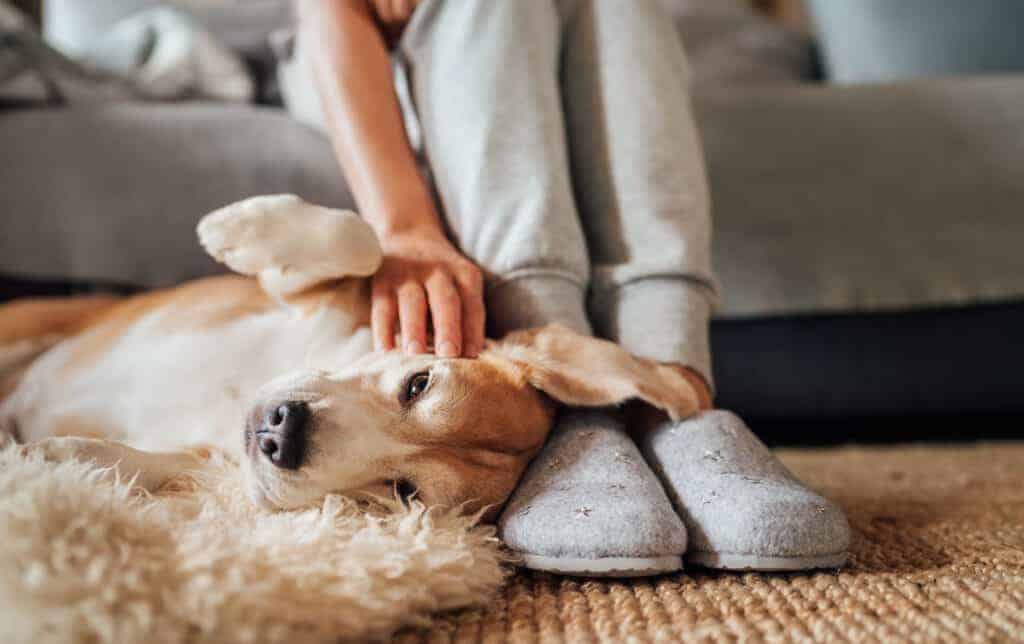
Interacting with Dogs – Do’s & Don’ts
Whether you’re interacting with a familiar or an unfamiliar dog, these basic do’s and don’ts are essential to follow when petting or dealing with dogs in any capacity.
Do:
- Always ask the owner for permission first!
- Wait for the dog to come to you
- Remain calm when petting
- Give the dog space to approach and let them set the pace
- Give gentle strokes that go with the direction of the coat
Don’t:
- Force interaction
- Rush up to them
- Stare them down
- Hug, kiss, or squeeze
- Lean over them
- Reach over the top of the head
- Make excessive noise to try and get their attention
When to Avoid Petting a Dog
Knowing when to avoid petting a dog can save an unpleasant experience on both ends of the leash:
- The dog is injured or seems highly stressed.
- The dog’s neck and shoulders have standing hair
- The tail is high and wagging tightly.
- The dog is a stray.
- The dog is trying to avoid you.
- It seems fearful. Fearful dogs are likely to snap defensively.
Approaching Stray Dogs
Safety first! Strays can be unpredictable, as you don’t know their history or personality. While you may have good intentions interacting with a stray dog, it’s best to observe from a distance unless you’re experienced in handling such situations and leave it to the professionals. You can call the non-emergency police line or Animal Control to catch the stray.
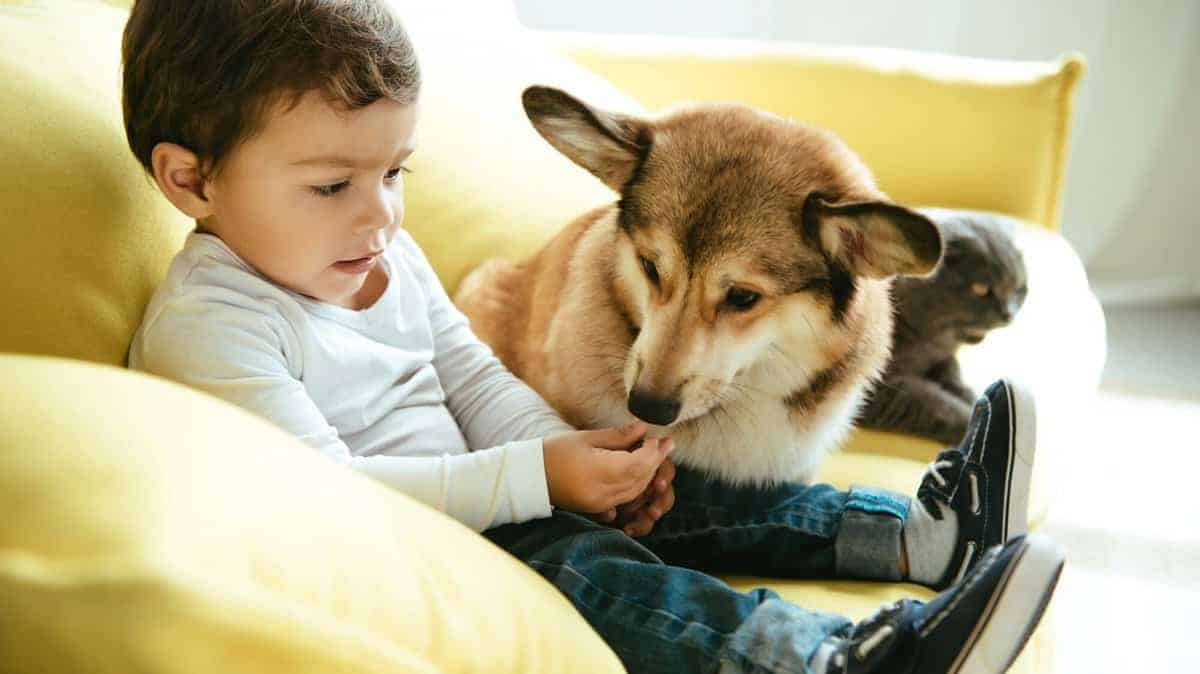
Dogs and Kids
This is a two-way street. While teaching kids to respect dogs is important, educating them about recognizing a dog’s signs of distress is equally essential.
Kids and babies should never be allowed to treat dogs like toys, miniature ponies, jungle gyms, etc. Remember that dogs are living, sentient beings and deserve respect.
Allowing kids to pull their ears, tail, muzzle, or sit on them and tease them is a recipe for disaster!
Some dogs are tolerant, but every dog has a limit, and if the dog snaps, it won’t be the dog’s fault, nor the kid’s – it will be yours!
Learn to Read a Dog’s Body Language
The flick of a tail, the perkiness of ears, or the dilation of pupils—all speak volumes. Investing time to understand these signals can prevent misunderstandings and build stronger bonds.
I highly recommend reading Doggie Language, no matter the age range. This is an excellent book showing a wide range of dog body language for small children to adults.
Final Thoughts
Mastering the art of properly petting and interacting with dogs not only ensures a positive experience for both you and the canine but also fosters a mutual respect and understanding. Remember, every dog is an individual with its own likes, dislikes, and boundaries.
By taking the time to learn to read a dog’s body language and respecting its space, you’re laying the groundwork for a friendship built on trust and kindness. Whether you’re greeting a new furry friend or bonding with your loyal companion, these interactions are the building blocks of a strong, lasting relationship.
As we continue to share our lives with these incredible animals, let’s commit to learning more about their needs and how we can best meet them. It’s a small step for us but a giant leap in our journey alongside our best friend.
Looking for more insights into understanding and caring for your canine companion? Join my community of dog lovers today. Subscribe to my newsletter for expert advice, training tips, and everything you need to ensure your interactions with dogs are safe, respectful, and rewarding.
Join the Pack!
Sign up for my newsletter and fetch the latest tips, tricks, and industry insights straight to your inbox!
Looking for a dog breed that tends to enjoy petting? Check out the Labs!

